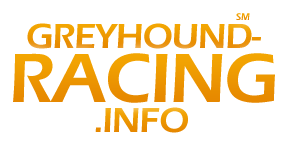Greyhound Racing History in the United States
As early as 1848, there were greyhounds in the United States. A coursing contest, with antelopes as the quarry, was briefly mentioned in a book about Oregon and California.
Cavalry officers serving in the West often kept greyhounds because they could both catch game and help scouts by detecting movement at a distance. Among the greyhound fanciers was George Armstrong Custer, who coursed his pack of greyhounds the night before the fateful Battle of the Little Bighorn in 1876.
Major James H. "Hound Dog" Kelly learned to breed and train greyhounds while he was Custer's orderly. In 1878, Kelly's team of four greyhounds set, what was considered a record, by running down six out of a dozen antelopes. That was generally considered the start of American coursing.
As farms spread throughout the Midwest and into the West after the American Civil War, many greyhounds were imported from England to help protect crops from the multiplying jackrabbit population. Coursing meets, usually with two competing dogs chasing a live rabbit, became popular as a Sunday afternoon diversion. Coursing events were also sometimes held, along with harness racing, at county fairs.
In 1905, Owen Patrick Smith was director of the chamber of commerce in Hot Springs, South Dakota. He was delegated to organize a coursing meet to attract visitors to the town. The meet was successful, but Smith felt that the sport was cruel. He began thinking about ways to make coursing a more humane sport with broader spectator appeal. Smith probably didn't know about the English "coursing by proxy" experiment of 1876, but he came up with the same basic idea: greyhounds chasing an artificial hare instead of a live one. He also improved on the idea by envisioning a race on an oval track rather than a straight course.
He brought his idea to George Sawyer, a wealthy greyhound owner who had many other interests, including a boxing arena in Oakland, California. Sawyer at first refused to give Smith any financial help. Like many greyhound owners of the time, he insisted that a greyhound wouldn't even chase a lure that didn't have a scent.
Nevertheless, Smith persevered. He organized the Intermountain Coursing Association and built a small circular track near Salt Lake City in 1907, where his artificial lure was introduced. It was a stuffed rabbit skin, pulled around the track behind a motorcycle. It worked, but Smith wasn't entirely happy with it.
Sawyer was impressed by the trial, though, and became Smith's financial backer. In 1910, Smith patented an "inanimate hare conveyor," basically an overhead arm that carried the artificial rabbit, trolley-like, along the track. Unfortunately, the device failed in its first test when water short-circuited the system.
It wasn't until 1919 that Smith had another major opportunity for a public demonstration of his idea for greyhound racing. In 1919, Sawyer and other businessmen financed construction of a track and grandstand at Emeryville, California, using the lumber from Sawyer's dismantled boxing arena. Smith had a new device, a motorized four-wheel cart that carried the lure on a rail around the 3/16-mile track. Attendance, though, was disappointing and several races were halted because the cart left its track.
Sawyer had become a believer, but he felt that greyhound racing would attract spectators only if they could place bets on the races. Smith was personally opposed to gambling, but he reluctantly agreed. They moved their operation to Tulsa, Oklahoma, and allowed bookmakers to take bets. Although Smith's lure mechanism still wasn't perfect, the races were a success.
The Tulsa venture also produced the first great racing greyhound, Mission Bay, who won 28 of 30 career races.
After five weeks in Tulsa, Sawyer and Smith moved on to East St. Louis, Illinois. The races were so popular there that companies complained about employees missing work to go to the track, so night racing was introduced and was even more popular.
Despite an average daily attendance of about 2,000 during the five-week meet, the $100,000 track went bankrupt and Sawyer lost interest in the venture. Smith then headed to Florida, where he got the financial backing that made greyhound racing a permanent success.
The first Florida greyhound track was built in 1922 in an area called Humbuggus, which was later renamed Hialeah and became better known for Thoroughbred racing. The key to success was night racing, which began in 1925. After establishing that track, Smith moved around the United States, helping set up tracks in Erlanger, Kentucky; New Orleans; Milwaukee, Wisconsin; Butte, Montana; and East St. Louis once more.
The sport had its fastest growth in Florida. The Hialeah operation closed down in 1926, but other greyhound racing tracks were established in St. Petersburg in 1925, Miami in 1926, Sanford-Orlando and Miami Beach in 1927. The West Flagler Kennel Club became Miami's second track in 1930 and a track opened at Tampa in 1932.
